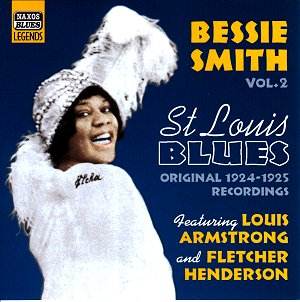Music videos use a wide range of styles of film making techniques, including animation, live action filming, documentaries, and abstract filming. Some music videos blend different styles, such as animation and live action. Many music videos do not interpret images from the song's lyrics, making it less literal than expected. Other music videos may be without a set concept, being merely a filmed version of the song's live performance.
An early example of a music video is St Louis Blue’s – Bessie Smith 1929.
Blues singer Bessie Smith appeared in a two-reel short film called Saint Louis Blues, featuring a dramatized performance of the hit song. It was so successful it was shown in theatres until 1932. In 1940, Walt Disney released 'Fantasia', an animated film based around famous pieces of classical music.
The Beatles took the videos to new heights with their groundbreaking films for 'Strawberry Fields Forever' and 'Penny Lane' made in early 1967, which used techniques, such as reversed film effects, dramatic lighting, unusual camera angles and rhythmic editing. These two landmark films are among the very first purpose-made concept videos that attempt to illustrate the song in an artful manner, rather than just creating a film of an idealized performance.
In the UK the importance of Top of the Pops to promote a single created an environment of innovation and competition amongst bands and record labels as the show producers placed strict limits on the number of videos it would use - therefore a good video would increase a songs sales as viewers hoped to see the video again the following week.
Queen's Bohemian Rhapsody also started a whole new era for using music videos as promos. In 1981, MTV launched, the first video played was 'Video Killed the Radio Star' by the Buggles. David Bowie scored his first UK number one in nearly a decade thanks to director David Mallets' eye catching promo for Ashes to Ashes.
In the early to mid 1980s, artists started to use more sophisticated effects in their videos, and added a storyline or plot to the music video. Michael Jackson was the first artist to create the concept of the short film. A short film is a music video that has a beginning, middle and end. He did this in a small way with Billie Jean, it wasn't until the 1984 release of the 'Thriller' short film that he took the music video format to another level.
Top of the Pops was censorous in it’s approach to video content, so another approach was for an act to produce a promo that would be banned or edited and so use the resulting controversy and publicity to promote the release. Early examples of this tactic were Duran Duran's, 'Girls on Film' and 'Frankie Goes to Hollywood'.
Music videos represent a crucial part of the music industry. Artists owe their careers to music videos as they are being given the chance of impressing the public not just with their vocal talent, but also with their looks or moves.

For the last two decades of the 20th century, the music industry rotated along the axis of MTV. The company represented a direct line into the hearts and minds of music consumers around the world, and the their main form of expression was music video. When MTV launched in August 1981 and blasted “Video Killed The Radio Star” through North American households, it represented the ambitions of a company who wanted to significantly influence popular culture. It succeeded in a big way, earning $7 million in advertising revenue in the first 18 months, and remained a critical part of the music industry by leveraging music videos to help expand the image of acts as diverse as Michael Jackson and Green Day, Guns n’ Roses and 2Pac.



No comments:
Post a Comment